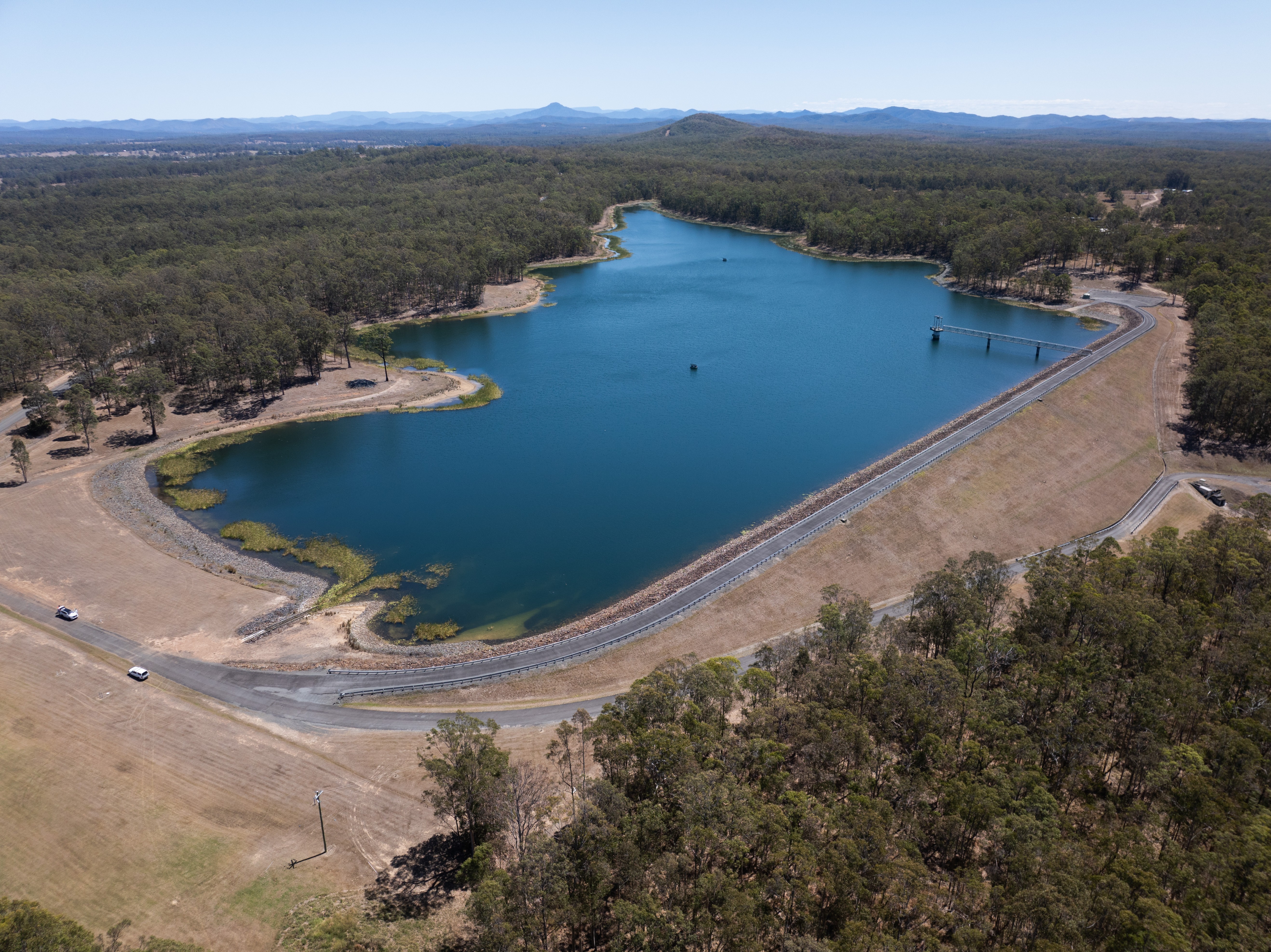
The project is funded by the Australian Government ($12.5 million), New South Wales Government ($13.22 million) and Kempsey Shire Council ($27.17 million). Australian Government funding is provided through the National Water Grid Fund.

The project will fund a new state of the art filtration plant, located at Steuart McIntyre Dam (pictured). Image credit: Kempsey Shire Council.
Project overview
The Kempsey water treatment plant project will address water quality and security issues for the Mid North Coast region. It will future-proof the drinking water supply of Kempsey, Frederickton, Smithtown and Gladstone.
The Steuart McIntyre Dam is the region’s primary above ground water storage facility, but it currently faces critical water quality and security concerns.
Through the project, a new water treatment plant will be constructed at the existing Steuart McIntyre Dam to address the dam’s water quality issues.
The detailed design and construction of the new plant includes:
- capacity of 12 megalitres (ML) of water per day, and allowance for future expansion of an additional 10 ML per day
- installation of new pumps at the existing dam pump station
- water treatment processes aligned to the quality of the raw water
- new raw water and clear water storage tanks
- an emergency storage lagoon
- backwash and firefighting pump stations
- new technology and network communication integration into the existing system.
Benefits from the project will include:
- improved water security and quality for the region
- better climate resilience, including during periods of drought
- public health benefits through higher quality drinking water supplies
- environmental benefits – the new plant will be more efficient with lower carbon emissions.
The project is expected to be completed in late 2026.
Key project benefits
- Find out more about water in Australia
- Learn more about the National Water Grid Fund

